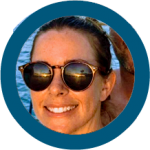BOCAS DEL TORO ANCHORING ALERT
BOCAS DEL TORO ANCHORING ALERT

SV MAISON DE SANTE spent hurricane season in Bocas Del Toro. They have a finger on the pulse there and share new restrictions that affect the anchorage in Bocas del Toro outside Red Frog Marina.
ATTENTION: Starting December 6, 2024, boats are NO longer able to anchor outside Red Frog Marina in Bocas Del Toro, Panama or they may be subject to $250-$300 fine by the Armada. All boats who were in the anchorage were told to leave by the Armada yesterday. I confirmed this with both a boat who was in the anchorage as well as a marina resident. The exact circumstances that led to this decision are unknown at this time.
SY MAISON DE SANTÉ 🇺🇸 Nicole & Keenan - Cal 46'


SV PERCEPTION in the Cayman Islands
SV PERCEPTION in the CAYMAN ISLANDS
November 20-23, 2024
Ocean Posse vessel, SV PERCEPTION, started this cruising season off in northern Costa Rica. They have spent the last three months cruising from Marina Papagayo, Costa Rica southeast along the coast through the Panama Canal and north-northwest to the Isla Mujeres, Mexico off the west coast of Cancun. On their recent passage to Isla Mujeres they decided to avoid a cold front and take a detour and pause in the Cayman Islands. Here they share of their adventures upon their arrival in the Cayman Islands en route to Isla Mujeres Mexico.

The blue-water crew of Perception (Marty, Grace, Jim) arrived at Grand Cayman on a fine Wednesday afternoon after a raucous 4-day sail from Panama. And boy is the water blue – after life in the Pacific; we’ve seen nothing like the clarity and brilliant azure color of the water surrounding the island. We cleared in at the port in Georgetown after following the harbor patrol pilot boat up to the quay. Port Security and the customs and immigration officials were all super friendly and helpful – a real pleasure after some of our experiences on the mainland over the past year. We had reservations at Marina Barcadere thanks to the shore-side persistence of Admiral Melinda and motored for 2.5 hours around the island into the bottom of North Sound to finally tie up and relax.

Our first surprise at Marina Barcadere was the docks – no floating docks! Obviously, the tidal range is minimal, about ½ meter while we were there, but we weren’t used to high docks that don’t move with you. It took some fender adjustments to get things right and avoid trapping our big ball fender under the dock during the tidal cycle. I don’t think we’ve ever been at a marina where we’ve had to step off Perception at the shrouds.

The marina is in decent shape with wooden docks that are sound, with solid power, and potable water. The marina office is in the nearby Scotts Marine building which contains a chandlery mostly targeted at fishing boats. The boat yard sports a 26-foot beam travel lift – I haven't had a chance to investigate further but it could have been a haul-out point even for our fat cat. The nearby Georgetown Yacht Club has a good restaurant where we dined three times during our stay. Conch fritters anyone?
We had about a day and a half to tour the island while waiting for our next weather window. The airport rental car center is just a 15-minute walk from the marina, so we picked up a little Toyota for about $45 per day and buzzed around the island. Our first stop was the Cayman Crystal Caves on North Side. The caves were opened for touring relatively recently, and offer 1.5 hour guided tours of the caves. (https://www.caymancrystalcaves.com/)
The caves and surrounding grounds are quite interesting and extensive. Our guide entertained us with history and information about the flora and fauna of the area. I was impressed at the good condition of the caves and features inside. They seemed little disturbed other than what had been done to open the caves for visitors. The lake in the caves offered a reflective view of the cave ceiling deeper in, and was the gem of the tour.



Our next stop on the island was Hell, pretty much a tourist trap but a fun and free stop where you can mail a postcard from Hell if the post office is open. The attraction in Hell is really just a jagged assortment of limestone rock formations with a couple of wooden platforms for an overlook. Hell is a painless stop on the way to the Cayman Turtle Center as long as you aren’t competing with a busload of cruise ship passengers.


Our last tourist stop on the island was the Cayman Turtle Center ( https://www.turtle.ky/). The center opened in 1968 and is billed as the longest operating conservation center for green turtles. The main attraction is the turtle breeding bay, where approximately 280 turtles are in constant motion giving you an up-close view of the massive animals. The bay is backed by a sandy beach where the females can lay their eggs which are then collected by the park staff to incubate in a controlled environment.
The friendly park guides provide information about the center and the turtles therein, happily pointing out Sparky, the oldest turtle in the pond at 95 years. There are many other pools in the park where you can get really close to the big turtles and touch the smaller ones.


After a few days stretching their sea legs SY PERCEPTION got their weather window from the Cayman Islands to Isla Mujeres Marina, Mexico. Jim reports that,"The sail from Cayman to Isla Mujeres was a pretty wild ride for me" and " We sailed almost the whole way with just our white sails doing 7-10 knots (pretty good for our cruising cat and my sailing skills)." With this leg of their voyage behind them they are now they are enjoying some well deserved downtime poolside.

SY PERCEPTION 🇺🇸 Jim & Melinda & Grace - Lagoon 42'






